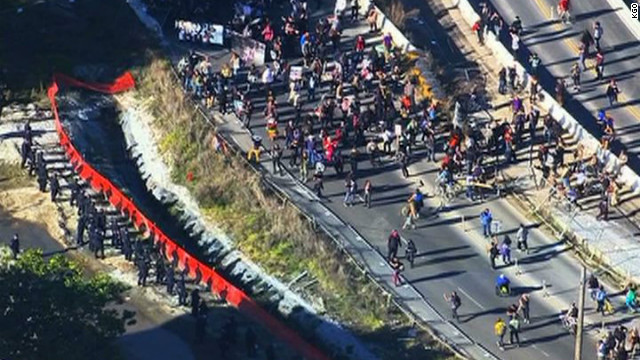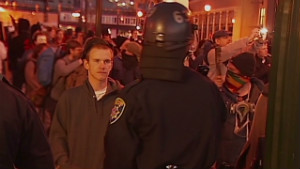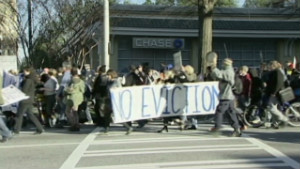MORE IN US »
By RYAN TRACY
WASHINGTON—"Occupy DC" protestors turned a midday police deadline into a media event for their cause on Monday, promising to defy a ban on camping in a federal park and hoisting a massive tarp over a statue in the center of McPherson Square.
At noon, as dozens of cameras rolled and a throng of reporters looked on, protestors pulled the deep blue tarp, emblazoned with stars, moons, and the words "Tent of Dreams" over the statue of Civil War Commander James McPherson, for whom the square is named. "Let us sleep so we can dream," they chanted. "This is what democracy looks like."
The National Park Service had said that it would begin enforcing a camping prohibition around noon on Monday in the square where protestors have pitched tents for nearly four months in one of the nation's last remaining Occupy encampments. There appeared to be no arrests as of midafternoon, though a U.S. Park Police spokesman didn't immediately respond to an inquiry.
Small groups of police officers stood at the corners of the park but didn't move to inspect tents or approach the hub of the demonstration at the center of the square.
Protestors vowed to hold their ground and welcomed the media attention. "Every time they do something like this, we grow," said Barry Knight, a 44-year-old organic farmer who on Monday joined the McPherson Square protestors from Freedom Plaza, the other of the two Occupy camps in Washington.
Sarah Shaw, 24, said Occupy DC was hoping to use the media attention as a way to speak out about inequality and the influence of corporate money on politicians. "We've already changed the dialogue in this country," she said. "We're not about camping. We're about the issues that we're fighting for."
Several Washington occupiers said Monday they planned to keep their protests alive until they felt the political system was changing for the better.
The anticipated showdown at the Washington camps comes after violence between authorities and Occupy protesters in Oakland, Calif., flared over the weekend. Oakland police said they arrested more than 400 people.
Protests have been more peaceful in Washington, where the National Park Service and its police force have jurisdiction over the Washington Occupy sites because they are part of a national park.
But tensions rose at the Occupy DC site Sunday after police used a stun gun to arrest a man who was tearing down fliers with information about the camping rules, according to news reports and a video posted by supporters of the protestors.
A spokesman for the park police told the Associated Press that the man became "aggressive and confrontational" when police tried to arrest him for disorderly conduct. Protest supporters bemoaned the use of force in Twitter messages Sunday night, with one calling it "unprovoked" and "disgusting."
Park Police have been tolerating apparent violations of the camping rule for months while park-service officials said they were respecting First Amendment rights. But the park service said it would change course under scrutiny from congressional Republicans and pressure from Washington, D.C., officials, who have said the encampment is unsanitary.
Round-the-clock vigils and "temporary structures" are allowed in the square as part of a protest, but tents can't be used for sleeping, cooking, or storing personal belongings, according to park service regulations which have been upheld by the Supreme Court.
In Oakland, protesters said a week ago that they planned to take over a vacant building but withheld the exact address until Saturday, in the biggest move to restart their movement since police shut down their encampments last fall. Three officers and one protester were injured.
The weekend confrontations in Oakland marked the latest violence between police and Occupy protesters in that city following clashes in October and November.
—Bobby White contributed to this article.Write to Ryan Tracy at ryan.tracy@dowjones.com





